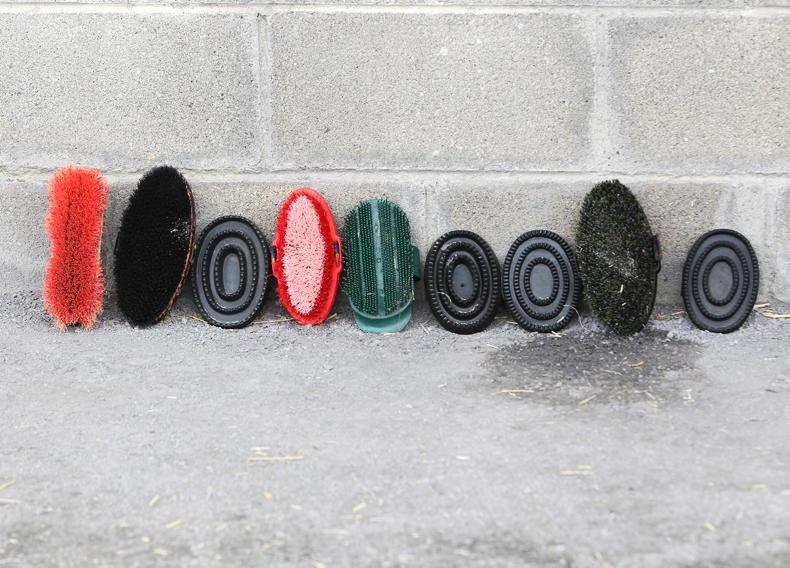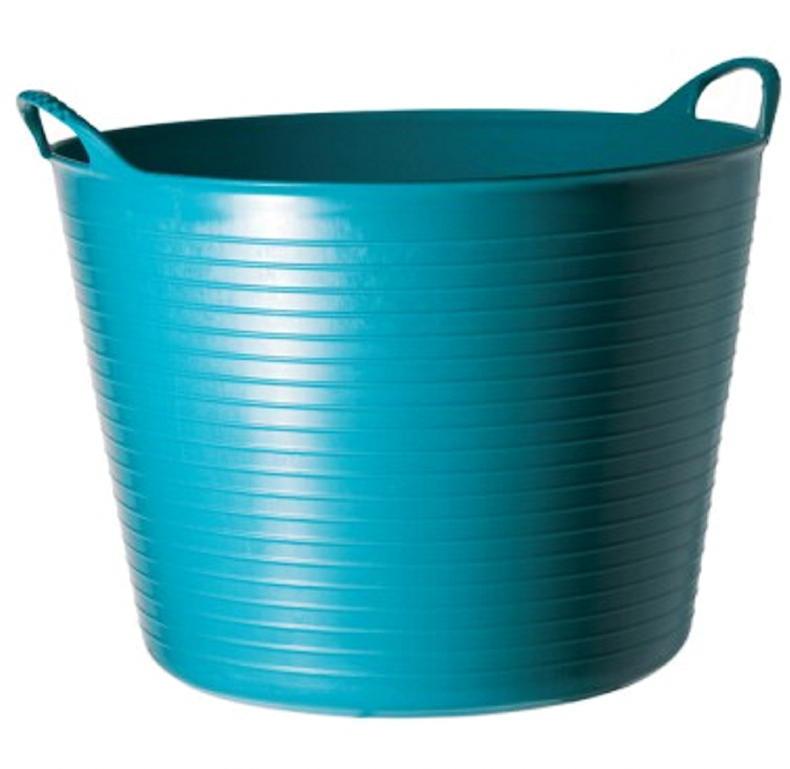Brushes
To help prevent skin problems like rain rot from spreading, each horse should have his own brushes, and brushes should be disinfected regularly.
Tip: Wash brushes with soap and water before disinfecting. This step clears out any organic debris the brushes might have collected. Use regular household soap and water, or dishwashing liquid and water, and get the dirt and debris off before disinfecting. Let brushes dry in sunlight after you’ve cleaned them, if possible, as a lot of bacteria can’t stand the ultraviolet rays.
How often: It’s best to clean brushes each season because different diseases can be spread in those time periods. For example, you’ll see a lot of rain rot in the autumn and winter, because horses often have heavier coats and are sweating or are turned out and can’t dry themselves off like they can with a short hair coat.
Water Buckets and Feed Tubs
A lot of mould and algae can grow in water buckets, and diluted bleach (one part bleach to nine parts water) is usually the best and safest way to disinfect them. Wipe the bucket down, use a good scrub brush, and rinse it out. Sometimes you don’t even need a cleaner, just a scrubbing brush to get the debris off. You don’t have to use bleach every time.
How often: Cleaning out water buckets should be a weekly job. Don’t forget pasture troughs as those can develop so much algae and debris. There’s nothing better than elbow grease for this job!
The cleaning process for feed tubs is the same as for water buckets. Try to keep the birds out of your feed buckets. If the horse goes out, empty the feed bucket to get rid of any leftover bits of food.
Or you can put a flake of hay over the top of the feed bucket to act like a cover. That will help prevent the birds from getting in them, because if they do, they’ll defecate in there. They can carry disease easily from place to place.
How often: Cleaning out water buckets and feed tubs should be done weekly. with an extra deep clean every month.




 This is a subscriber-only article
This is a subscriber-only article
 It looks like you're browsing in private mode
It looks like you're browsing in private mode






SHARING OPTIONS: